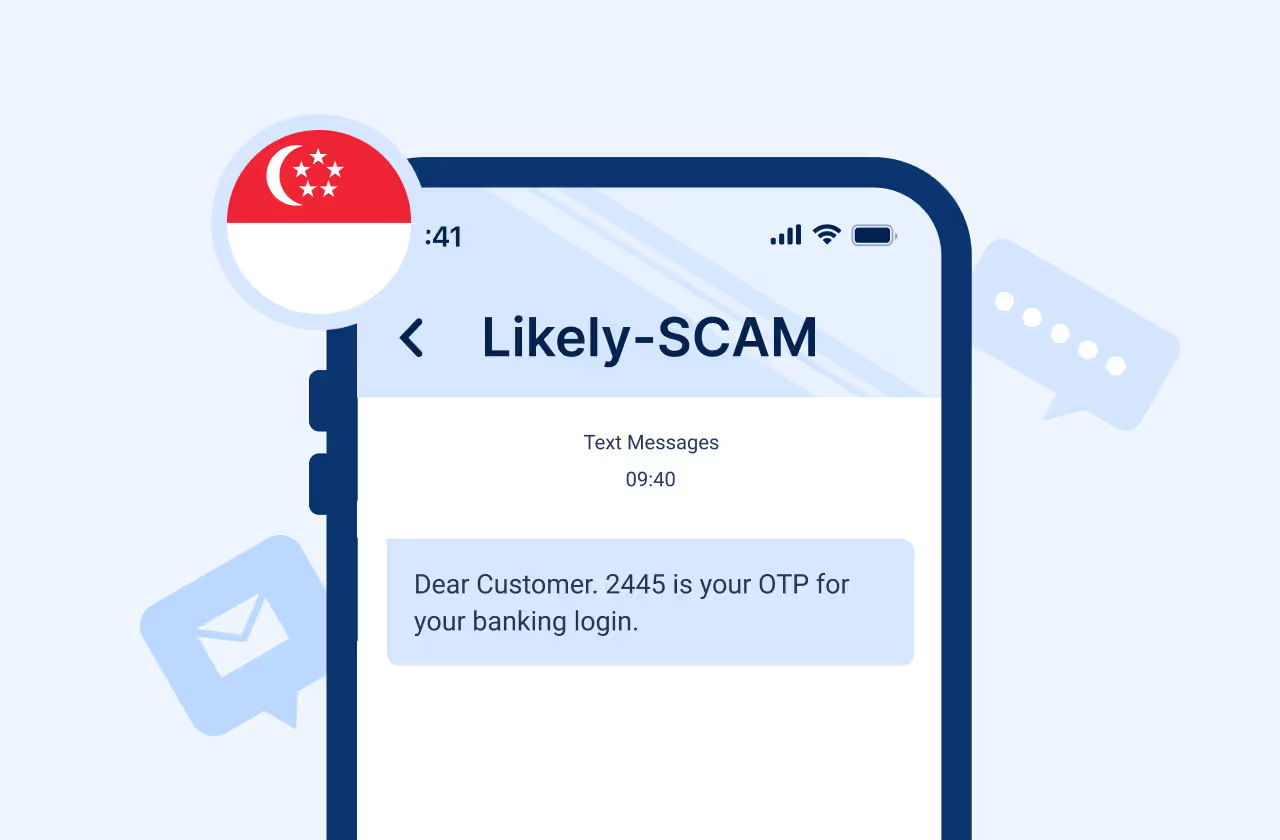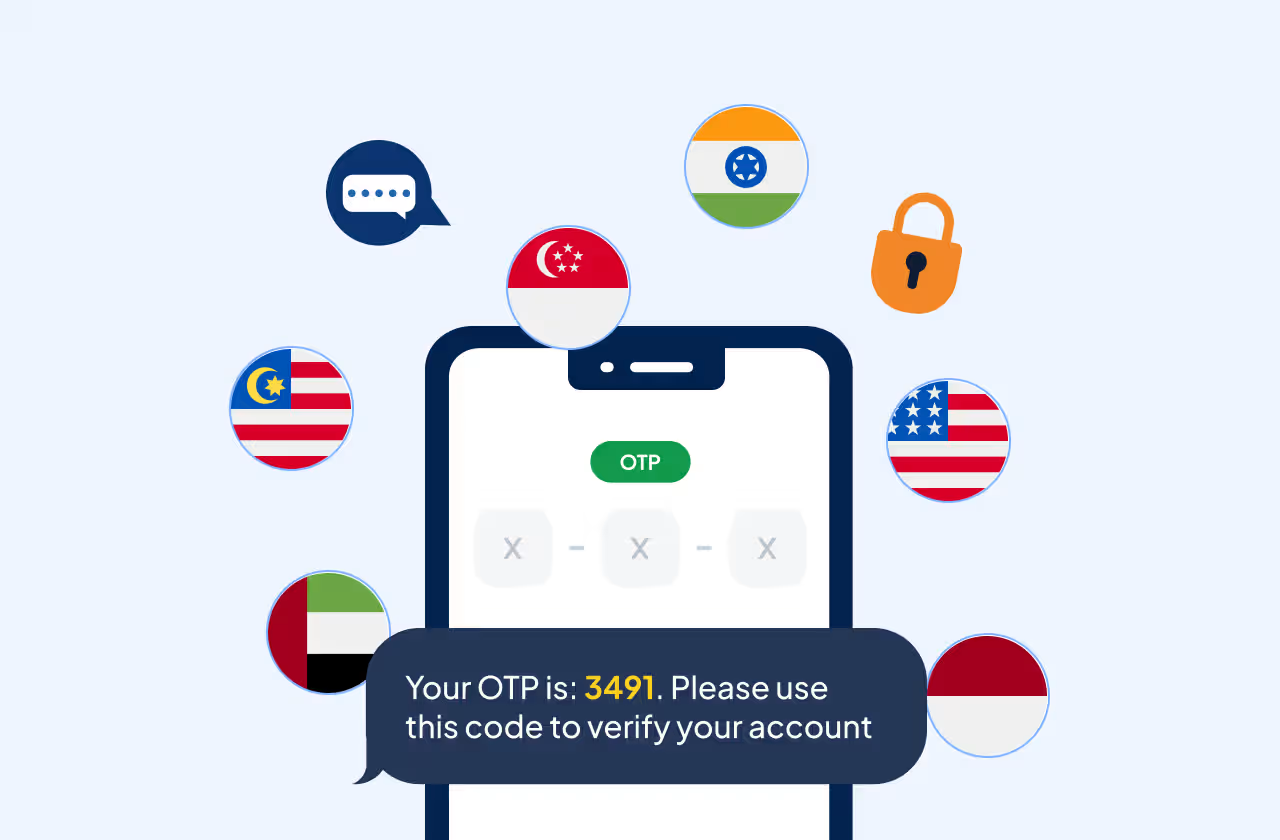Key Takeways
- The number type you choose directly impacts OTP speed, deliverability, and trust.
- Short Codes offer the fastest throughput for 2FA, while 10DLC and Toll-Free balance cost and scalability.
- Many OTP failures stem from using unregistered or mismatched number types with carrier restrictions.
- VerifyNow by Message Central lets you send OTPs instantly using pre-registered sender IDs and approved templates.
- The future of 2FA lies in multi-channel verification with adaptive routing across SMS, WhatsApp, and voice.
Why This Decision Is Critical for 2FA Success
When you’re rolling out OTPs (one-time passwords) for 2FA in the U.S., the number you use to send them matters more than most people realise. It doesn’t just affect cost or speed—it affects conversion, reliability, and brand trust. In fact, one survey found that nearly 56% of IT professionals worldwide say their company uses SMS-based one-time codes for login flows.
So if you’re asking “Should I use 10DLC, Toll-Free or Short Code?” you’re asking the right question. But the answer isn’t obvious, and many teams overlook the real signals.
In this article I’ll walk you through:
- the differences between these three number types,
- how each one impacts your 2FA/OTP delivery,
- the hidden trade-offs most people skip,
- and how you can use our platform (Message Central) to test quickly and pick the right path.
Ready to skip all the paperwork and get live the very same day? Sign up with Message Central and start sending 2FA OTPs effortlessly to your users across 190+ countries; no registrations, no delays, just instant authentication.
What is the difference between 10DLC, Toll-Free and Short Code for OTPs?
What is 10DLC and when should you use it?
10-digit Long Code (10DLC) is essentially a business-text number that follows A2P registration guidelines in the U.S. It gives you a “normal” looking phone number but approved for application-to-person traffic. According to messaging-industry data, a registered 10DLC may offer throughput around 150 messages per minute for some providers.
Pros:
- Lower cost setup vs many short codes
- Feel of a local number, which can help trust
Cons:
- Lower throughput than short codes
- Registration still required (though less than short code)
- Limits apply: e.g., daily caps depend on registration tier.
In a 2FA scenario where you send moderate volume OTPs (say under 500k/month) and care about cost + brand trust, 10DLC is often a strong pick.
What are Toll-Free numbers and when do they fit OTPs?
Toll-Free SMS numbers (800/888 etc) allow sending messages at national scale with good speed and fewer restrictions than local long codes. For example, some industry sources note that toll-free numbers can support messaging at higher volumes than basic 10DLC numbers.
They strike an interesting middle ground: faster than many simple long codes, more national-recognisable than local numbers.
If you’re delivering OTPs across the U.S., want decent speed and moderate cost, toll-free may hit the sweet spot.
What is a Short Code and why do enterprises still use it for OTPs?
Short codes (5-6 digit numbers) are built for high throughput, low filtering by carriers, and brand recognition. For instance, some sources claim short codes can handle up to 400 messages per second or more.
Pros:
- Very high delivery speed
- Strong brand signal (users recognise “12345” vs a 10-digit)
Cons:
- Cost: setup and recurring leasing can be high
- Registration/approval lead times: weeks to months
- Overkill if your volume is modest
For large scale enterprise systems (millions of OTPs/month) where speed, reliability and brand matter most, short codes remain the gold standard.
Why the number type you pick matters for conversion, trust and deliverability
Here’s where serious teams stand out: choosing the number type isn’t just a technical decision, it’s strategic.
- A study revealed that “delay in OTP delivery” has measurable impact on user completion. Even a 1-second delay can reduce successful authentication rates.
- Delivering from a number that looks official matters. Users expect 2FA from a known sender; a generic or unexpected number erodes trust.
- The industry is seeing more scrutiny: according to a report on SMS vulnerabilities, attackers exploit SIM-swap and reuse of recycled numbers.
So when you pick your number type, ask:
- Can it handle my peak volume quickly?
- Will users recognise the number and trust it?
- Are there registration or compliance hurdles that will delay me?
- What happens if there’s a failure (fallback story)?
How to choose the right number type for your 2FA/OTP use case
Here’s a simplified matrix to compare:
Use-case guidance
- If you’re a startup sending OTPs to users in one or a few states and want local feel + cost efficiency → go 10DLC.
- If your user base spans the U.S., you want national recognition, moderate volume → go Toll-Free.
- If you’re a large enterprise sending millions of OTPs/month, need max reliability and brand recognition → go Short Code.
One major advantage: If you integrate via our platform VerifyNow OTP API, you get free credits upon signup, allowing you to test quickly without any upfront commitment.
What most teams skip and what you shouldn’t
Here are hidden pitfalls you’ll want to avoid:
- Throughput caps: many 10DLC numbers have daily or campaign-specific limits.
- Filtering by carriers: unregistered or mis-classified numbers may trigger blocks before you even hit scale.
- User perception: a number unfamiliar to the end-user increases friction and reduces trust.
- Fallback logic: if your first number type fails, do you have an alternate path?
- Security implications: SMS OTP is convenient, but not bullet-proof. Experts argue SMS-based verification is susceptible to SIM swap attacks and may not suffice for high-risk flows.
P.S. In cases where SMS 2FA doesn’t make it, VerifyNow’s built-in WhatsApp fallback steps in to deliver OTPs seamlessly.
Future-proofing your 2FA strategy
SMS isn’t going away—but the landscape is evolving. Verified SMS, RCS, push-notifications, even passkeys and security keys are on the rise. You’ll want a platform that can pivot. Our developer-friendly platform and guides help you configure flexible routing, fallback methods and multi-channel verification.
Focus on:
- multi-channel support (SMS + WhatsApp + voice)
- adaptive routing (choose best number type automatically)
- monitoring & analytics (delivery, cost, performance)
- fraud-resistant architecture (reduce SIM-swap risks)
Ready to take action?
Start sending your first OTPs today: explore the VerifyNow API, claim free credits on Send OTPs via SMS/WhatsApp, and configure full end-to-end flows with Setup 2FA.
Pick your number type smart, deliver fast, convert more.
FAQs
Which number type delivers MFA OTPs the fastest in the USA — 10DLC, Toll-Free, or Short Code?
Short Codes deliver OTPs the fastest in the USA, capable of sending 400–500 messages per second with under 2-second latency, according to CTIA carrier data. Toll-Free numbers offer strong nationwide delivery speeds, while 10DLC provides a local, lower-cost option with moderate throughput. Platforms like Message Central’s VerifyNow automatically route your 2FA messages through the fastest verified channel for optimal speed and compliance.
Which number type has the highest throughput for 2FA OTPs— Short Code, Toll-Free, or 10DLC?
Short Codes have the highest throughput for 2FA, supporting hundreds of OTP messages per second and large-scale parallel delivery. Toll-Free numbers provide moderate throughput, ideal for mid-volume verification flows, while 10DLC suits smaller apps with regional OTP needs. For businesses sending millions of 2FA messages monthly, Short Codes ensure peak performance. You can compare and test throughput using Send OTPs via SMS or WhatsApp with VerifyNow.
Can I send 2FA OTPs without registering for 10DLC or getting a Short Code or Toll-Free number?
Yes. With VerifyNow by Message Central, you can send OTPs instantly using pre-registered sender IDs and pre-approved templates — no 10DLC, Toll-Free, or Short Code registration required. It’s the fastest way to go live, with zero paperwork, instant approvals, and coverage across 190+ countries. Just sign up, use your free credits, and start sending verified 2FA messages today.










